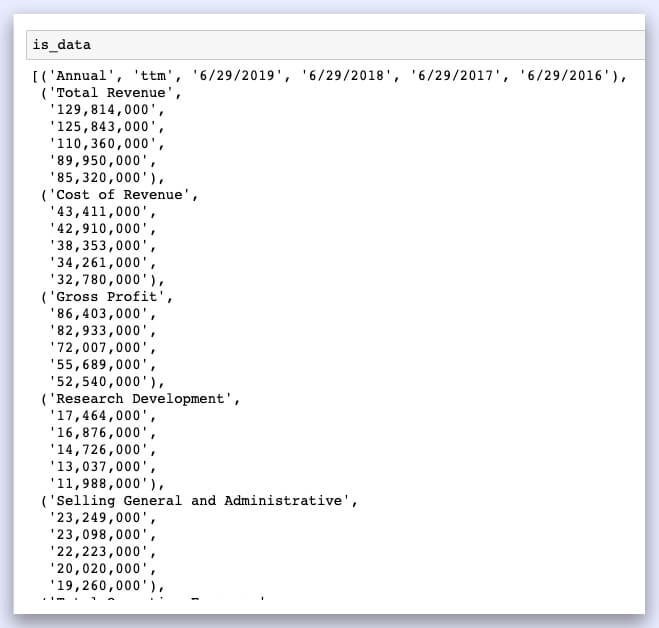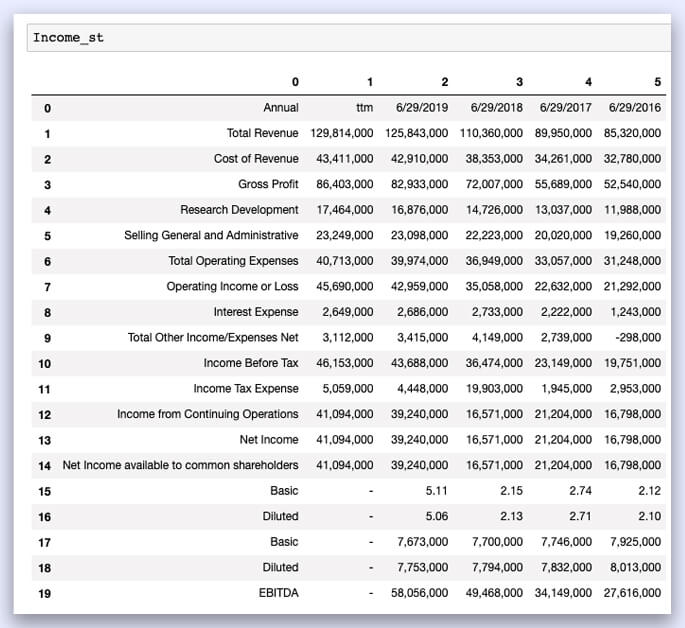
There aren’t a lot of data science applications in accounting. Accounting jobs, on the other hand, are among the more time-consuming sectors that should be automated. You can collect financial accounts for individual companies so that they can compare their performance with the other companies.
Manipulation of web data can be challenging at times, particularly when the site is changed, but learning these web scraping service procedures will save you a lot of time in the long run. Here’s an example of using Python to get financial statements of Yahoo Finance by finance data scraping.
Import Libraries
Urlib.request is indeed an open-source library for parsing webpage content. When you dial that number, you’re simply asking the website to retrieve data from it. If you’re interested, here’s some more information.
https://docs.python.org/3/library/urllib.request.htmlBeautiful Soup is another library that makes viewing saved data in XML format easier. XML is a comparable format to HTML that allows you to store information between tags. When you open it, it appears to be a bit jumbled. Just like when you download a webpage’s source code.
import pandas as pd from bs4 import BeautifulSoup import urllib.request as ur
Processing
Here’s a quick tip for adjusting the company name and plugging it into the URL link. It will come in helpful later if you need to retrieve hundreds of financial statements from different companies.
# Enter a stock symbol index= ‘MSFT’# URL link url_is = ‘https://finance.yahoo.com/quote/' + index + ‘/financials?p=’ + index url_bs = ‘https://finance.yahoo.com/quote/' + index +’/balance-sheet?p=’ + index url_cf = ‘https://finance.yahoo.com/quote/' + index + ‘/cash-flow?p=’+ index
We’ve now saved the URL link. It will look like this if you manually open them in a Web browser.

Read the URL
After that, all we have to do is access the link and convert it to the right lxml format. It’s that simple.
read_data = ur.urlopen(url_is).read() soup_is= BeautifulSoup(read_data,’lxml’)
Because the elements were initially in HTML format, when you open soup is, it will look like a jumble. All elements are systematically organized into classes.

Data Manipulation
They are stored in “div” after a few searches, so it is possible to construct an empty list and use a for loop to find and append all elements to the list.
ls= [] # Create empty list for l in soup_is.find_all(‘div’): #Find all data structure that is ‘div’ ls.append(l.string) # add each element one by one to the list ls = [e for e in ls if e not in (‘Operating Expenses’,’Non-recurring Events’)] # Exclude those columns
There are a lot of “none” elements in ls because not all “div” has an element. They just need to filter.
new_ls = list(filter(None,ls))
It will result into

If you go one step further, you can begin reading the list from the 12th spot.
new_ls = new_ls[12:]
To create a data frame, we must iterate six objects at a moment and save them as an item set. However, we require a list in order for the panda’s library to convert it into a data frame.
is_data = list(zip(*[iter(new_ls)]*6))

Perfect, that’s exactly what we’re looking for. All that’s left is to read it into a data frame.
Income_st = pd.DataFrame(is_data[0:])

Data Cleaning
The first row should be read as the column, and the first column should be read as the row index. Here’s a list of things that need to be cleaned up.
Income_st.columns = Income_st.iloc[0]
# Name columns to first row of dataframeIncome_st = Income_st.iloc[1:,]
# start to read 1st rowIncome_st = Income_st.T # transpose dataframeIncome_st.columns = Income_st.iloc[0]
#Name columns to first row of dataframeIncome_st.drop(Income_st.index[0],inplace=True) #Drop first index rowIncome_st.index.name = ‘’
# Remove the index nameIncome_st.rename(index={‘ttm’: ‘12/31/2019’},inplace=True)
#Rename ttm in index columns to end of the yearIncome_st = Income_st[Income_st.columns[:-5]]
# remove last 5 irrelevant columns
Your Data Frames should look like this after applying the same principles to the income statement, balance sheet, and cash flow.



DateTime becomes a row index once the DataFrames are transposed, and the features become column names.
Feel free to ask any questions, contact Scraping Intelligence today!!







